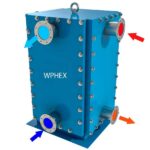Horsepower vs Shaft horsepower
Introduction
Understanding the difference between horsepower and shaft horsepower is crucial in various engineering and mechanical fields. This article delves into these concepts, offering clarity and insight into their applications.
Horsepower (HP) is a widely used unit of measurement for power, quantifying the rate at which work is accomplished. However, there’s more to horsepower than meets the eye. In the world of engines and machinery, the terms “Horsepower” and “Shaft Horsepower” often emerge, each with its unique significance and applications. In this detailed article, we will unravel the differences between these power measurements, shedding light on the mechanical intricacies that set them apart.
Understanding Horsepower:
Horsepower is a well-known term in the world of mechanics and engineering. Originating from the efforts of James Watt, it’s a unit of power that has become standard in assessing the output of engines and motors.
Historical Context
- James Watt’s Contribution: Watt’s definition of horsepower was based on the power of workhorses, leading to the standard measurement of 33,000 ft·lbf/min.
Horsepower, abbreviated as HP, serves as a standard unit for power measurement. It represents the rate at which work is done and is pivotal in evaluating the performance of various engines, such as those found in cars, industrial machinery, and more. It’s essential to note that there are different standards and types of horsepower, including:
- Mechanical Horsepower (Imperial Horsepower): This type of horsepower is approximately equivalent to 745.7 watts and is commonly used in the United States and other regions following the imperial system.
- Metric Horsepower: In contrast, metric horsepower is approximately equivalent to 735.5 watts and is the standard in countries using the metric system.
The choice between these standards depends on regional conventions and preferences, but both serve the same fundamental purpose of quantifying power output.
Exploring Shaft Horsepower:
Shaft horsepower refers to the power transmitted through a shaft. It’s a more specific measurement compared to general horsepower.
Definition and Calculation
- Transmission of Power: How shaft horsepower is calculated and its significance in machinery.
- Calculation Methods: check out how to calculate the shaft horsepower
Shaft Horsepower (SHP), also measured in HP, is a specific type of horsepower that defines the power output of an engine in a unique way. Unlike standard horsepower, which accounts for various internal losses and inefficiencies within the engine, shaft horsepower focuses solely on the power available at the output shaft of the engine.
In essence, shaft horsepower represents the actual power that is ready for use in driving external equipment or propulsion systems. It disregards losses due to components like gearboxes, alternators, or other mechanical parts, making it a pure measure of the engine’s capacity to perform work.
Comparing Horsepower vs Shaft Horsepower
The Key Distinction:
The key distinction between standard horsepower vs shaft horsepower lies in their respective contexts and scopes:
- Standard Horsepower (HP): This measurement encompasses the entire power output of the engine, including internal losses and inefficiencies. It serves as a general indicator of the engine’s power capability and is commonly used for rating engines in various applications.
- Shaft Horsepower (SHP): On the other hand, shaft horsepower isolates the power available at the output shaft of the engine. It provides a more accurate representation of the power that can be effectively harnessed for external work, making it indispensable in situations where efficiency and precise power delivery are paramount.
Significance in Engineering:
Understanding the distinction between standard horsepower and shaft horsepower is paramount in engineering and design. Accurate assessment and specification of the appropriate type of horsepower are crucial for optimizing the performance and efficiency of mechanical systems.
For instance, when designing a marine propulsion system, knowing the shaft horsepower is essential to determine the engine’s ability to propel a vessel efficiently. Using standard horsepower in such cases could lead to incorrect sizing and suboptimal performance, potentially affecting fuel efficiency and overall functionality.
Conclusion:
In conclusion, while both standard horsepower vs shaft horsepower are measured in HP and share a common mathematical formula, their significance and applications differ significantly. Standard horsepower provides a holistic view of engine power, including internal losses, while shaft horsepower focuses exclusively on the power available at the output shaft, disregarding internal inefficiencies.
Engineers, mechanics, and professionals in fields involving engines and machinery must grasp the distinction between these power measurements to make informed decisions and optimize system performance. Whether you’re working on an automotive project, an industrial machine, or any application where precise power delivery matters, understanding the nuances of horsepower and shaft horsepower is vital for success.
Keywords: Horsepower vs Shaft Horsepower, Mechanical Horsepower, Metric Horsepower, Shaft Horsepower Definition, Engine Power Output
External links: horsepower












